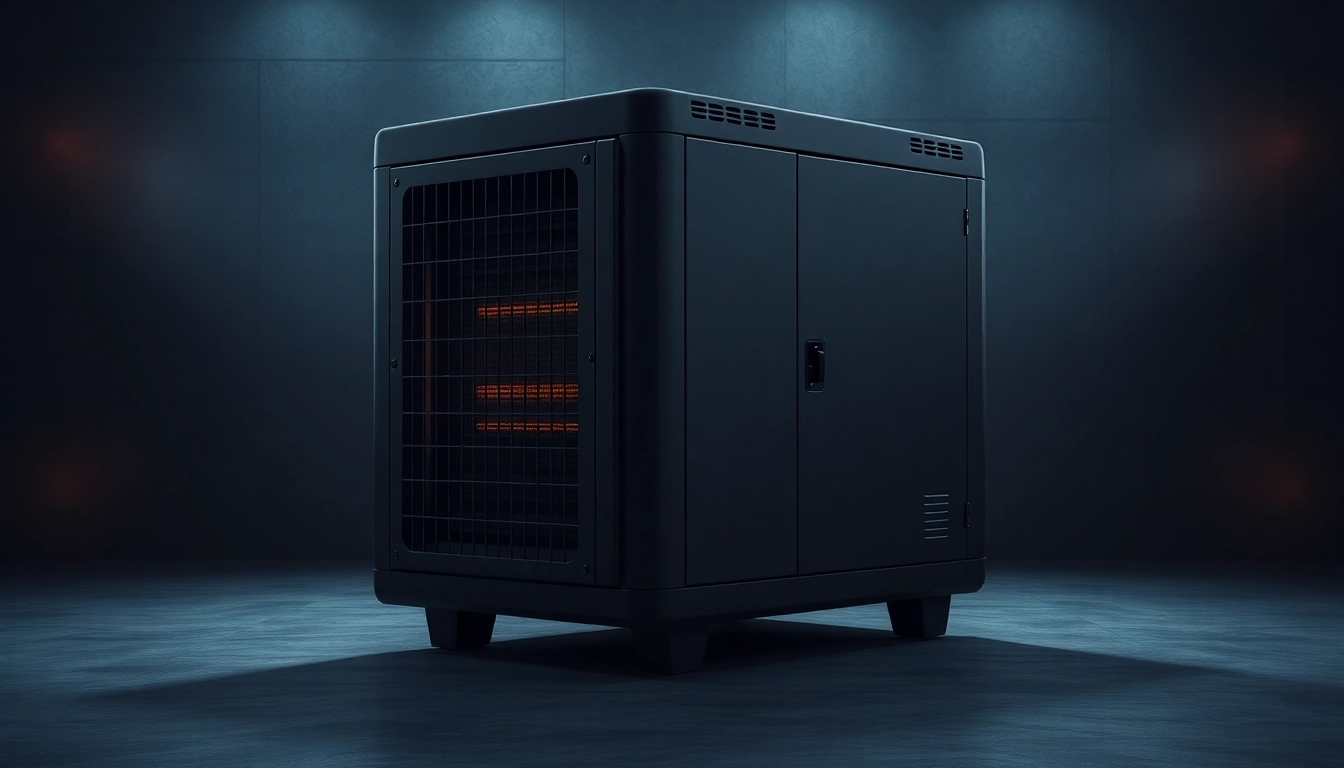
Understanding Diesel Fuel Heaters
What is a Diesel Fuel Heater?
Diesel fuel heaters are specialized devices designed to maintain the optimal temperature of diesel fuel, particularly in colder climates. They prevent fuel from gelling and ensure that engine systems function seamlessly even in frigid conditions. Because diesel fuel can solidify or thicken at low temperatures, having a reliable heating system is crucial for vehicles, machinery, and heating applications that rely on diesel fuel. One of the key features of a diesel fuel heater is its ability to regulate fuel temperature, which promotes better combustion and overall engine performance. Whether you’re considering a heater for a commercial truck or an agricultural machine, integrating a diesel fuel heater can significantly enhance your equipment’s reliability and efficiency.
How Diesel Fuel Heaters Work
Diesel fuel heaters operate on the principle of heat transfer. They typically function in two primary ways: in-line heating and tank heating. In-line heaters are installed directly within the fuel line, pre-heating the fuel just before it enters the engine. This approach helps prevent gel formation and ensures a consistent flow of liquid fuel. Conversely, tank heaters warm the diesel fuel stored in the tank, effectively raising its temperature and improving its viscosity. Most modern heaters employ electric heating elements, allowing for quick heating times and minimal energy consumption.
Benefits of Diesel Fuel Heating Systems
The benefits of diesel fuel heating systems are manifold. Chief among them are:
- Improved Engine Start: Heaters facilitate easier cold starts by ensuring that diesel remains fluid.
- Enhanced Fuel Efficiency: Warmer fuel burns more efficiently, leading to better fuel economy.
- Reduced Emissions: Properly heated fuel leads to complete combustion, which can mitigate harmful emissions.
- Prevention of Engine Damage: Heaters help prevent engine wear and tear caused by using gelled or thickened diesel.
- Operational Reliability: With a functional diesel fuel heater, vehicles and machinery can operate smoothly even in the harshest weather conditions.
Types of Diesel Fuel Heaters
In-Line Fuel Heater Variants
In-line diesel fuel heaters are popular for their efficiency and ease of installation. They are typically mounted in the fuel line between the tank and the engine. Various models exist, including electric in-line heaters that use heating elements to raise the temperature of the fuel as it flows through. Brands like Phillips & Temro Industries and Arctic Fox offer innovative solutions that ensure quick heating times—sometimes as short as three to four minutes—making them ideal for immediate cold-weather performance.
Electric vs. Fuel Line Heaters
When choosing between electric and fuel line heaters, it’s crucial to understand their pros and cons. Electric heaters are often easier to install, require minimal maintenance, and are incredibly efficient. They draw power from the vehicle’s battery or external power source, making them suitable for stationary equipment like generators and heaters used in residential settings. On the other hand, fuel line heaters may use waste heat from the engine to warm the fuel or employ other combustion methods. This type can be beneficial for prolonged use in larger machinery. Evaluating the specific needs for thermal efficiency, installation feasibility, and operational cost can aid in making the appropriate choice.
Choosing the Right Diesel Fuel Heater for Your Needs
Selecting a diesel fuel heater is not a one-size-fits-all scenario. Factors to consider include:
- Type of Application: Determine if the heater will be used for residential heating, vehicle enhancement, or industrial applications.
- Power Requirements: Assess the electrical capacity of your diesel vehicle or machinery to ensure compatibility with electric heaters.
- Environmental Conditions: Understand the temperature extremes you may face; some heaters are built specifically for sub-zero environments.
- Installation Space: Consider the space available for installation; in-line heaters may fit better in tighter areas than standalone units.
- Budget: Price varies substantially between models, so select one that fits your budget while meeting your performance criteria.
Installation and Maintenance
Step-by-Step Installation Guide
Installing a diesel fuel heater can be relatively straightforward if you follow a clear process. Here’s a step-by-step guide:
- Gather Your Tools: Essential tools may include wrenches, pliers, electrical tape, and sometimes a drill.
- Prepare the Location: Choose a mounting point in line with the fuel line (for in-line heaters) or select an appropriate space for tank heaters.
- Shut Off Power: Ensure that all electricity supplying the heating element is turned off to avoid accidents.
- Install the Heater: Follow the manufacturer’s instructions for securing the heater in place and connecting it to your fuel line or tank.
- Test the Setup: Restore power and turn on the heater to ensure it operates correctly. Monitor for leaks around connections.
Regular Maintenance Tips
Regular maintenance ensures that your diesel fuel heater operates efficiently over its lifespan. Key maintenance practices include:
- Routine Cleaning: Dust and debris can accumulate over time; clean external parts regularly.
- Inspect Connections: Periodically check all electrical connections and fuel lines for wear and tear.
- Monitor Fuel Quality: Ensure you use high-quality diesel fuel to minimize deposits and contaminants.
- Test Performance: Conduct periodic tests under various conditions to ensure the heater is functioning as expected.
Common Issues and Solutions
Despite their robust design, diesel fuel heaters may encounter issues over time. Here are some common problems and suggested solutions:
- Failure to Heat: If your heater isn’t warming the fuel, check for power issues or burnt-out heating elements.
- Leaking Fuel Lines: Loose fittings may cause this issue; tighten connections and replace worn lines to prevent leaks.
- Circuit Breaker Tripping: This can occur due to an overloaded system; ensure that the heater’s wattage is compatible with your electrical system.
Performance Metrics for Diesel Fuel Heaters
Measuring Efficiency: What to Consider
When assessing the efficiency of diesel fuel heaters, consider metrics such as:
- Heating Time: How quickly can the heater raise the fuel temperature to operational levels?
- Energy Consumption: Evaluate the wattage used during operation and compare it to the benefits gained.
- Fuel Economy Improvement: Measure any changes in fuel consumption after installing the heater, especially under cold conditions.
Performance Indicators: When to Upgrade
Recognizing when to upgrade your diesel fuel heater can save time and money in the long run. Indicators include:
- Consistent Heating Issues: If your heater struggles regularly to keep the fuel warm, it may be time for an upgrade.
- Increased Maintenance Costs: Noticeable rising costs associated with repairs could suggest that the unit has reached the end of its lifecycle.
- Incompatibility with New Standards: As fuel standards evolve, ensure that your heater can support any new requirements.
Maximizing Fuel Efficiency
To fully benefit from a diesel fuel heater, consider the following strategies:
- Optimize Insulation: Insulating fuel lines can minimize heat loss, ensuring the heater maintains optimal temperatures.
- Regular Maintenance: Following maintenance protocols can keep heaters in peak shape.
- Utilize Quality Fuel: Investing in high-quality fuel can prevent gelling and improve overall combustibility, further enhancing efficiency.
Future Trends in Diesel Fuel Heater Technology
Innovations to Watch
The diesel fuel heating industry is evolving rapidly. Future innovations might include:
- Smart Technology Integration: Enhanced controls that utilize IoT to monitor and adjust heating based on environmental conditions.
- Energy Efficient Designs: New models focusing on lower energy consumption while providing superior heating capabilities.
- Hybrid Systems: Solutions combining traditional heating with renewable energy sources, potentially allowing for greener operation.
Environmental Impact and Sustainability
As environmental regulations tighten, the diesel heating industry is shifting towards solutions with lower emissions. Employing cleaner technologies and materials in heater production can reduce the carbon footprint and operate within emerging governmental frameworks. Innovations like temperature-sensitive materials that cease operation when not needed effectively contribute to sustainability efforts.
Adapting to Changing Fuel Standards
With ongoing changes to diesel fuel formulations, it’s critical for fuel heater designs to evolve in tandem. Adapting to biodiesel and ultra-low sulfur diesel requirements will shape future products, ensuring that heaters can efficiently handle changing fuel properties without compromising performance.







